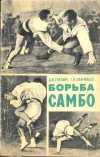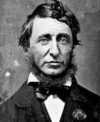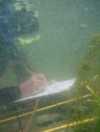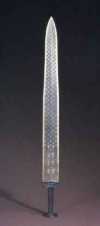 Wingsuit fliers wear a specialized jumpsuit that shapes the human body into an airfoil, a structure whose shape provides lift, propulsion, stability, and directional control over a flying object. Fabric sewn between the legs and under the arms of the wingsuit allows the flier to glide through the air much like a bird, while a separate parachute allows him to land safely. A British stuntman died wing-diving in 2013, just a year after he parachuted into what high-profile event? Discuss
Wingsuit fliers wear a specialized jumpsuit that shapes the human body into an airfoil, a structure whose shape provides lift, propulsion, stability, and directional control over a flying object. Fabric sewn between the legs and under the arms of the wingsuit allows the flier to glide through the air much like a bird, while a separate parachute allows him to land safely. A British stuntman died wing-diving in 2013, just a year after he parachuted into what high-profile event? Discuss
Source: The Free Dictionary
 Despite being the last digit to come into use in the numerical system, the zero plays a central role in mathematics. During the 2nd century CE, Ptolemy began using a small circle with a long bar above it to symbolize zero. Because it was used alone, not just as a placeholder, this Hellenistic zero was perhaps the first documented use of a number zero in the Old World. Four centuries later, an Indian mathematician wrote a book of rules governing the use of the zero. Is zero an odd or even number?
Despite being the last digit to come into use in the numerical system, the zero plays a central role in mathematics. During the 2nd century CE, Ptolemy began using a small circle with a long bar above it to symbolize zero. Because it was used alone, not just as a placeholder, this Hellenistic zero was perhaps the first documented use of a number zero in the Old World. Four centuries later, an Indian mathematician wrote a book of rules governing the use of the zero. Is zero an odd or even number?  Sambo is a modern martial art and combat sport that was developed to enhance the military’s hand-to-hand combat system in the former Soviet Union. In 1938, it was named the official sport of the USSR. Sambo combines a variety of wrestling styles with east Asian martial arts, boxing, and even fencing, from which it derives its parrying and lunging techniques. What does the combat style’s name mean?
Sambo is a modern martial art and combat sport that was developed to enhance the military’s hand-to-hand combat system in the former Soviet Union. In 1938, it was named the official sport of the USSR. Sambo combines a variety of wrestling styles with east Asian martial arts, boxing, and even fencing, from which it derives its parrying and lunging techniques. What does the combat style’s name mean?  Buzkashi is a traditional Central Asian team sport in which players on horseback try to grab the carcass of a headless goat or calf and pitch it across a goal line or into a target circle or vat. Although it is known as a popular Afghani sport, Buzkashi began as a sport of the steppes, a vast, prairie-like ecoregion of Eurasia, and remains a popular game throughout the region. Games can last for several days, and competition is fierce. How is the animal carcass prepared before a game?
Buzkashi is a traditional Central Asian team sport in which players on horseback try to grab the carcass of a headless goat or calf and pitch it across a goal line or into a target circle or vat. Although it is known as a popular Afghani sport, Buzkashi began as a sport of the steppes, a vast, prairie-like ecoregion of Eurasia, and remains a popular game throughout the region. Games can last for several days, and competition is fierce. How is the animal carcass prepared before a game?  Kinship terms like mother and son are words used by a specific culture to describe various familial relationships. Such terminologies include words used to address members of one’s own family as well as words used to identify people’s relationships to one another. Kinship terms generally distinguish between the sexes and generations and indicate whether people are related by blood or marriage. What is the difference between “descriptive” and “classificatory” kinship terms?
Kinship terms like mother and son are words used by a specific culture to describe various familial relationships. Such terminologies include words used to address members of one’s own family as well as words used to identify people’s relationships to one another. Kinship terms generally distinguish between the sexes and generations and indicate whether people are related by blood or marriage. What is the difference between “descriptive” and “classificatory” kinship terms?  Over the centuries, as styles of clothing change and evolve, so too do the ways in which men wear their facial hair. In 18th-century Europe, the chinstrap, a narrow line of beard that grows along the chin and jaw, gained popularity, while the handlebar moustache, with its characteristically lengthy ends, is considered stereotypical of the 19th-century American Wild West. What are “friendly mutton chops”?
Over the centuries, as styles of clothing change and evolve, so too do the ways in which men wear their facial hair. In 18th-century Europe, the chinstrap, a narrow line of beard that grows along the chin and jaw, gained popularity, while the handlebar moustache, with its characteristically lengthy ends, is considered stereotypical of the 19th-century American Wild West. What are “friendly mutton chops”?  Calorie restriction (CR), a diet known by many names, is the practice of limiting dietary energy intake with the intention of improving overall health and slowing the aging process. While caloric intake among practitioners is limited, care is taken to ensure that dieters receive adequate vitamins, minerals, and nutrients. CR has been shown to lower cholesterol, blood pressure, and fasting glucose in human subjects. What are some of the criticisms of this diet?
Calorie restriction (CR), a diet known by many names, is the practice of limiting dietary energy intake with the intention of improving overall health and slowing the aging process. While caloric intake among practitioners is limited, care is taken to ensure that dieters receive adequate vitamins, minerals, and nutrients. CR has been shown to lower cholesterol, blood pressure, and fasting glucose in human subjects. What are some of the criticisms of this diet?  Underwater archaeology, a branch of maritime archaeology, is the study of past human life, behaviors, and cultures using the physical remains found in bodies of water or buried beneath water-logged sediment. Researchers in this field generally examine the sites of shipwrecks, submerged airplanes, structures created by humans in water bodies, and places where people once lived that have since been flooded or covered by water. How do divers record their findings underwater?
Underwater archaeology, a branch of maritime archaeology, is the study of past human life, behaviors, and cultures using the physical remains found in bodies of water or buried beneath water-logged sediment. Researchers in this field generally examine the sites of shipwrecks, submerged airplanes, structures created by humans in water bodies, and places where people once lived that have since been flooded or covered by water. How do divers record their findings underwater?  A ziggurat is a pyramidal structure built in receding tiers upon a rectangular, oval, or square platform with a shrine at its summit. Access to the shrine is provided by a series of ramps located on one side of the temple or by a continuous spiral ramp. These temples—the earliest examples of which date to the end of the third millennium BCE—were commonly erected by the Sumerians, Babylonians, and Assyrians. What is the significance of the multicolored brick facings found on many ziggurats?
A ziggurat is a pyramidal structure built in receding tiers upon a rectangular, oval, or square platform with a shrine at its summit. Access to the shrine is provided by a series of ramps located on one side of the temple or by a continuous spiral ramp. These temples—the earliest examples of which date to the end of the third millennium BCE—were commonly erected by the Sumerians, Babylonians, and Assyrians. What is the significance of the multicolored brick facings found on many ziggurats?  In 1965, archeologists excavating ancient tombs in Hubei, China, discovered a bronze sword sheathed tightly in a wooden scabbard. The weapon had been in a wet, underground tomb for over 2,000 years, yet the blade remained untarnished and sharp. Scientists, amazed by the sword’s resilience, tested it to determine its chemical composition and found it to be an alloy of six metals. What does the “text of birds and worms” inscribed on the blade tell historians about the artifact?
In 1965, archeologists excavating ancient tombs in Hubei, China, discovered a bronze sword sheathed tightly in a wooden scabbard. The weapon had been in a wet, underground tomb for over 2,000 years, yet the blade remained untarnished and sharp. Scientists, amazed by the sword’s resilience, tested it to determine its chemical composition and found it to be an alloy of six metals. What does the “text of birds and worms” inscribed on the blade tell historians about the artifact?